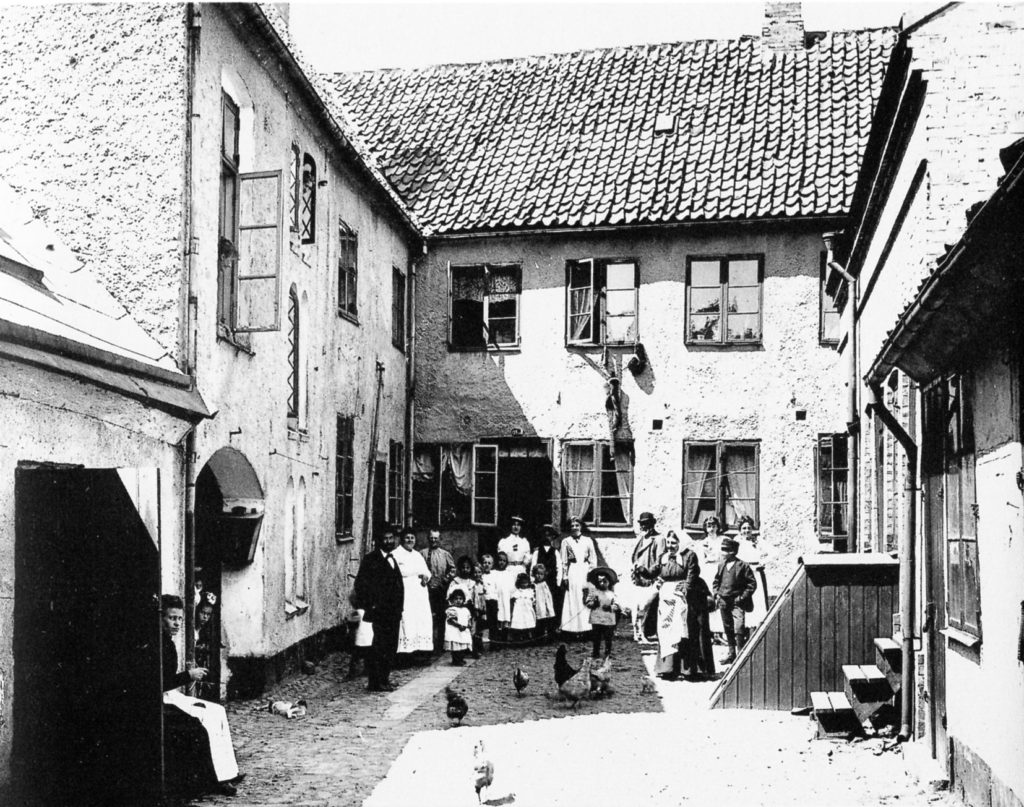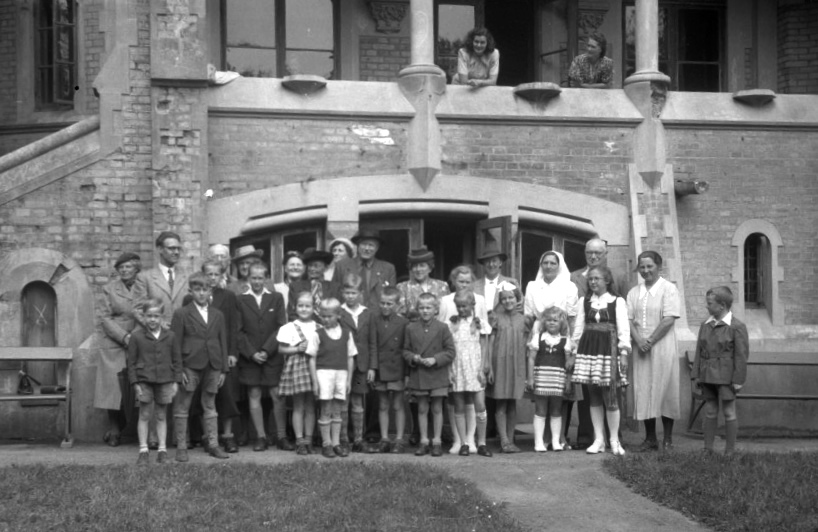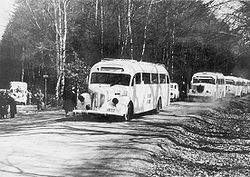Lund and refugees

During the period 1851 – 1930, almost 1.2 million people emigrated from Sweden to the United States and other transoceanic countries. The emigration numbers from southwest Skåne, however, were relatively small but, according to a comprehensive Emigration Inquiry conducted between 1907-13, a proportionally large number emigrated from Genarp, a village in the current Lund municipality.
Immigration was also taking place at the same time, albeit on a much smaller scale.
In the official report from 1886, the governor of Malmöhus County wrote that Jewish traders of Mosaic faith had moved to the city areas and could “behave arrogantly and with less acceptable conduct.” Many of these Jewish traders came to Lund. Not until 1782 were Jewish people allowed to settle in the country and many restrictions were imposed upon them. For a long time, they were only allowed to reside in Stockholm, Gothenburg, Norrköping and Karlskrona. Those who came in the early 19th century, were mostly wealthy immigrants from northern Germany.

A shtetl in Lund
At the end of the 19th century, immigration took a completely different turn. Many poverty stricken Jews were fleeing the Tsarist Russian empire to escape the pogroms that had intensified around the year 1870. Many came to Sweden from present-day Lithuania and eventually to Lund. In the 1870’s, the southern part of the city had been extended on the initiative of councillor August Theodor Ripa. This area came to be known as Ripa’s Meadow, and later Nöden and Judéen. The newly arrived immigrants were drawn to this area as acquaintances and relatives were already living there.
This new wave of immigrants settled mainly on the streets Stora Tvärgatan, Prennegatan, Hospitalsgatan and Mariagatan. This meant that Lund now had what in Yiddish is called a shtetl (a small Jewish quarter), and the only one in Sweden. These people supported themselves mainly through farm trade, an unpopular occupation among the native traders, and were generally well-treated by the residents of Lund. Eventually, they established a synagogue, the most well-known located on Prennegatan.

Refugees from Nazi Germany
In 1939, many intensive debates took place concerning the refugee situation in Lund. The Swedish Medicines Agency proposed that 10 German-Jewish doctors should be allowed to come to the country and be given refugee status from Nazi persecution. A storm of opinions followed, particularly in the university cities of Uppsala and Lund. Arguments concerning the poor labour market for Sweden’s own doctors was raised. Lund also warned that foreign elements would come to the country, which would have a harmful effect and be “indefensible for the future”. At a meeting on March 6, the Lund Student Union decided by 724 votes to 322 that a letter should be sent to the King demanding that the ten Jewish doctors should not be allowed into the country.
However, in 1943, the citizens of Lund were of a different opinion, particularly as the German-Nazi regime in Denmark was preparing atrocities against the Jewish population in the country. The Jews had been given pre-warning and were able to flee in large numbers across the Sound to neutral Sweden. Many arrived in Lund and a refugee agency was established at the university. Families in the city made rooms available for these new arrivals. The Danish students formed their own students’ club, and a special Danish school was established, which continued from 15 November 1943 to 9 June 1945.
The final stages of the war
During the final stages of the war, other refugees came to Sweden and to Lund. Many of these people could not or did not want to return to their countries of origin. This was especially true of those from the Baltic regions.

In April and May 1945, the Bernadotte white buses arrived carrying, among others, victims of the concentration camps. On 5 May, the newspaper Sydsvenskan reported that 1,933 refugees had been placed in quarantine in Lund. The schools Klosterskolan, Parkskolan, Flickskolan and Råbyskolan were used for the purpose as well as the sports hall, Idrottshallen and Palaestra. Some scientists also came to Lund as refugees during the war years. These include philosopher Manfred Moritz, radio measurement technician Hellmuth Hertz from Germany and geographer Edgar Kant from Estonia.
During the latter part of the 1940’s and during the 1950’s and 1960’s, a large influx of manual workers came to Sweden, many from Finland and former Yugoslavia as well as Greece and Turkey. However, most settled in the industrial cities and not so many in Lund. Over the years, refugees have constituted a considerable part of the overall number of immigrants that have come to Sweden, many of whom have settled in Lund.
From troubled parts of the world
It began with the Hungarians arriving here after the Soviet Union’s invasion of the country in 1956. The unrest and persecution in various parts of the world since 1970, have also had consequences in Lund. For example, in 1970, with people arriving from Poland. Much unrest in the Baltic Sea regions has been caused by elements of anti-Semitism. During the 1980’s, a power struggle ensued between the regime in Poland and the solidarity movement under the leadership of Lech Walesa.
During the 1970’s, many refugees arrived from Latin America, predominantly Chile, the main cause being General Pinochet’s coup after deposing Salvador Allende in 1973. Also, in Argentina and Uruguay, increased loss of liberty following the military takeover resulted in a flood of refugees from these countries coming to Sweden and Lund.
No major influx of refugees has arrived from Africa apart from Ethiopians and Eritreans. People fled Eritrea following the struggle for freedom from Ethiopia during the harsh dictatorship of Mengistu. Following Eritrean independence in 1993, Isaias Afwerkis became president, and any criticism of his regime was brutally dealt with.
Many Kurds have also come to Lund from the Middle East, following conflict with the regimes in Turkey and Iraq. The Islamic revolution in Iran in 1979 also resulted in many refugees coming to Lund. Similarly, following the long and bloody war between Iran and Iraq in the 1980’s.
Up until 1990, it was easy to believe that wars in Europe were finally at an end, but then the violent dissolution of Yugoslavia occurred resulting in many Bosnians and Serbs fleeing to Sweden and Lund as refugees.
When considering the inhabitants of Lund who are foreign-born or born in Sweden with two foreign-born parents, the three largest groups are clearly Poles, Iranians and Iraqis. This is a direct consequence of the refugee situation that has transpired in the world since 1970.
Text: Sverker Oredsson, 2016
